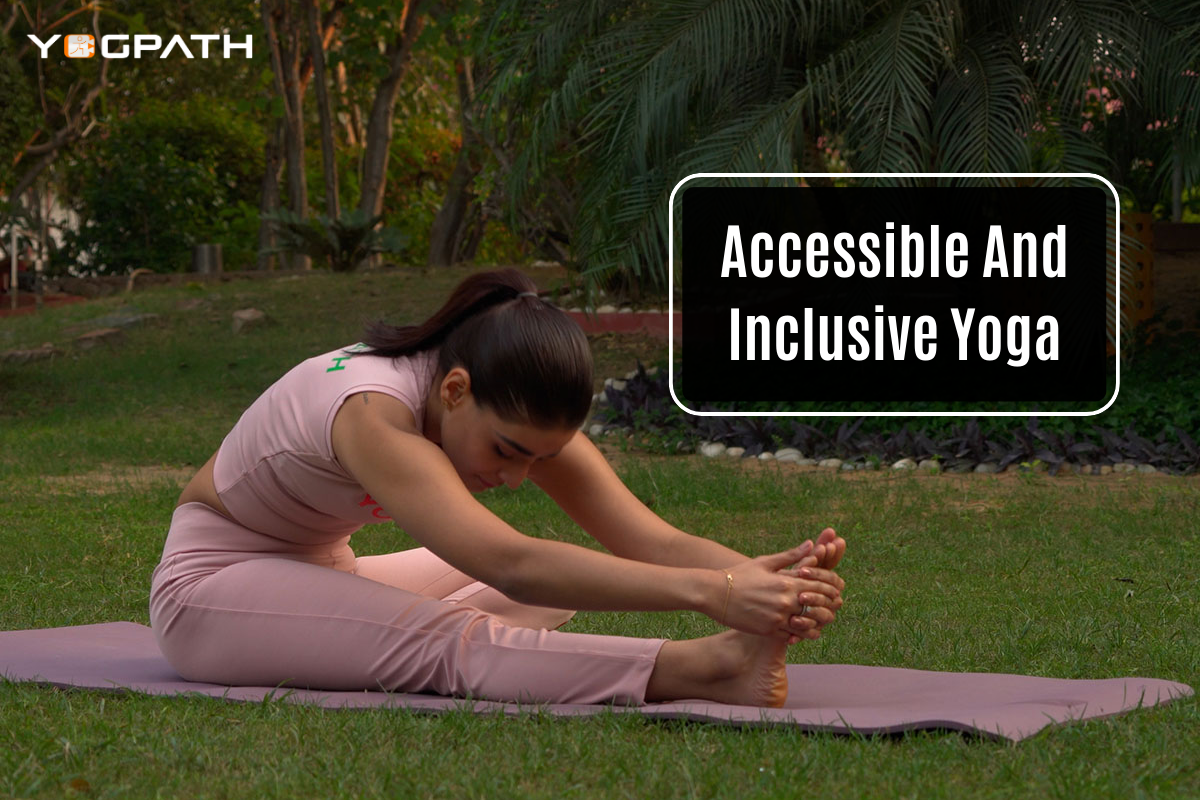
Like everything else, yoga has progressed through the years. Our priorities and requirements have evolved as the world has accelerated. Our yoga routine will inevitably change to accommodate these requirements. Yoga students and instructors alike should pause to consider how their own ideas about accessibility and inclusivity shape their practise and teaching.
Let’s dive deeper
While defining terms like “Accessible” and “Inclusive” is helpful, there is much more to think about when discussing what inclusive yoga might look like.
Accessibility and Inclusivity
Present-day yoga classes, workshops, retreats, and events still attract a relatively uniform clientele, and the majority of yoga instructors share similar backgrounds. It’s indicative of how yoga isn’t welcoming to people from all walks of life.
Present-day yoga classes, workshops, retreats, and events still attract a relatively uniform clientele, and the majority of yoga instructors share similar backgrounds. The inability to broaden yoga’s audience is reflected in this.
If you’re a yoga instructor or studio owner, you might be perplexed as to why your classes aren’t drawing a more diverse crowd, despite being labelled “for all” or featuring a teacher of colour. Here’s a quick rundown of some things to think about if you want to put your words into action and truly welcome more people of colour, people with disabilities, and other marginalised people into your yoga classes and other spaces.
Utilizing inclusive language and cues
Paying closer attention to the language we use when interacting with students is a great place to start when thinking about inclusivity. Both before and after school are included. The words we use to encourage and direct students’ work, cue students through changes, and create a safe environment are all part of this. Watch your words and tone so you can help the most students.
Yoga that takes trauma and resilience into account
As yoga instructors, we are not qualified to assess our students’ health or make recommendations for treatment. The ability to better understand trauma, however, is a valuable asset. All of us are affected by this, and many of our so-called problems have their roots here.
Most yoga students start their practise with the intention of addressing some aspect of their lives that isn’t quite functioning as it should. They tend to appear ‘unfiltered,’ looking for a safe place to land where they can finally begin the process of healing and personal development. Using trauma-informed care, we can better assist students, encourage them to reconnect with themselves, and fortify their resilience as they face adversity.
Learning more about trauma is important if you are not already trained in this area. There are many excellent and thorough workshops available that can equip you with resources to help your students and community. For additional reading, see the article’s reference section.
The openness and accessibility of yogic thought
One of the most common excuses for not practising yoga is the belief, or personal experience, that it is physically inaccessible. They might say things like, “I can’t touch my toes, so I can’t do yoga.” And while that might be the case, they can still do yoga. This is especially true when we remember that touching our toes (or performing any other type of shape) is just one aspect of a much more complex routine.
It’s important to stop and ask ourselves if there’s any ableism in the way we teach yoga if some people can’t participate because they can’t do certain poses. More people may find success with yoga if they go beyond the physical postures and investigate the philosophy and other aspects that involve the energetic body. The misconception that yoga is all about physical movement can also be dispelled in this setting. Just as getting into Downward-Facing Dog is a “yogic” act, so are pranayama, meditation, chakra work, and even meaningful conversation.
Modifying Asanas
Some forms of asana and yogic disciplines may be easier to practise than others. It’s not hard to make adjustments in Hatha, Restorative, Chair, Iyengar, and even Vinyasa yoga. It may be trickier to modify more structured practises like Ashtanga, but there are many instructors who have done so successfully.
Adding a level of accessibility to your teaching is as simple as bringing in a few props, like blocks, blankets, straps, and bolsters. It is essential to remember to demonstrate with props and offer variations and modifications in order to make the practise more accessible. When students develop more agency and control over their practice, they frequently begin to apply these principles outside of the yoga studio. In this moment, change begins.
Products and services that are accessible to all audiences
When we talk about access, it doesn’t just mean getting in. Many yoga studios offer membership prices that are prohibitive to a large group of folks. Again, a contributing factor the lack of diversity and inclusivity in wellness and yoga spaces. If you’re serious about being accessible, perhaps start by researching ways in which you can offer scholarships or pricing options.
Places that welcome all people
Again, what does your community require, considering the pros and cons of both virtual and physical settings? Check for things like steps, the width of doorframes, and other obstacles before inviting a group of adaptive athletes who use wheelchairs to a location to learn.
Give back to your neighborhood.
Even though it may sound “inclusive” to advertise that our classes are open to anyone, that’s actually quite a lot of people. Instead, we can direct our attention as yoga instructors, community leaders, and students toward the people we hope to serve every day.
Finally, we need to stop emphasising asana to the exclusion of all else when practising yoga. Yoga teachers have a responsibility to facilitate their students’ goals and lives by providing safe and welcoming environments in which to practice. Yoga experiences can be made more inclusive, accessible, and wholesome one breath at a time.











